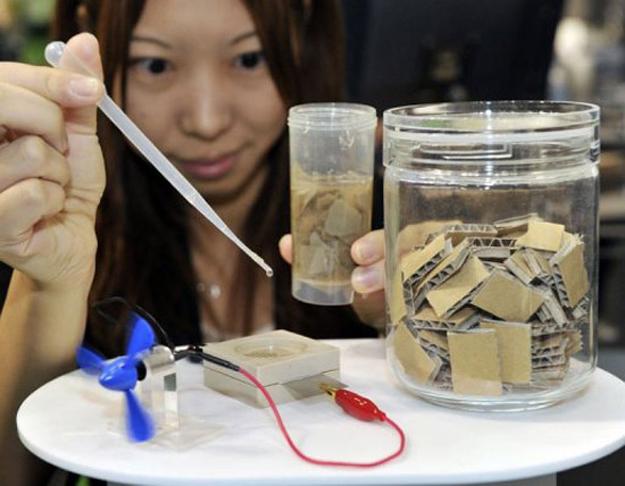
It’s been a long time now that the breakthrough in electrical technology provided the modern battery and unshackled our devices from the wall outlet — allowing us to power our household and electronics while on the go.
Like other steps of technological advancement and evolution, Sony has devised a way to transform shreds of paper or cardboard into viable source of electrical energy – enough to say, power a small fan.
How does it work though? Well it all sounds more complex than it actually is. By taking a thin sheet of material referred to as a “bio-battery,” an enzyme is able to break down sugar and turn it into hydrogen ions and electrons. This chemical reaction creates an electrical current and H20 particles, which then can power a number of electrical devices.
Without reliving some long repressed memory of high school chemistry, we might remind ourselves that cellulose is comprised of long chains of glucose (sugar), and glucose is found not only in drinks we intake like soda and fruit juice, but also in the cell walls of most plants.
Of course, in order for Sony’s bio-battery to receive its power, these long chains of glucose need to be broken down and the energy converted. For people who have had the displeasure of having to deal with termites you might recall that termites derive their nourishment by eating wood and can naturally break down chains of glucose.
The enzymes Sony utilized acts in similar fashion, so instead of dealing with ravenous termites Sony simply introduces its enzymes into the equation; to break down these chains and convert into usable energy without the use of heavy metals or chemicals found in common batteries.
While the technology is indeed impressive and proposes a possible solution to one of the many ecological issues surrounding energy sources, it might be some time before such technology could stretch beyond simply powering a small MP3 player or fan. With hope though, it won’t be too long before sugar-based bio-battery technology is further refined and used on a mass scale to power a range of useful devices.


